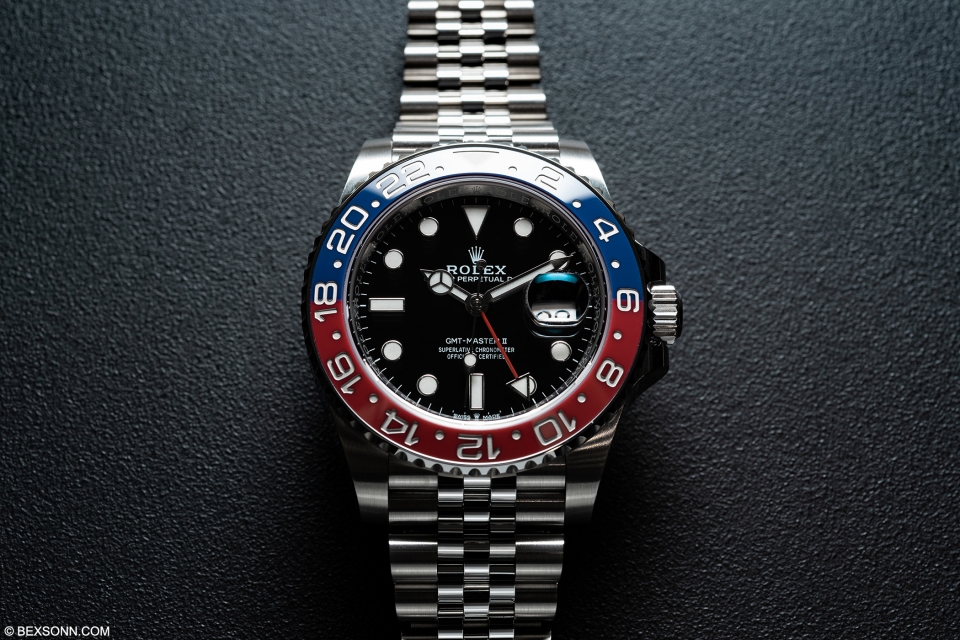Four years ago, Rolex introduced the GMT-Master with a Pepsi bezel. Needless to say, Rolex aficionados and collectors alike greeted it with some scepticism and in all honesty, it was pretty understandable. You see, they didn’t just produce a new bezel for the models that already existed, no. Rolex made the new Pepsi GMT-Master entirely out of white-gold, making it one of their most expensive, mass-produced, sports timepieces. Some loved the idea of Rolex fashioning this new GMT out of white-gold, some didn’t, as this would mean the hope of owning the new-age Pepsi GMT (made in steel) was lost. While this may very well be true the fact that Rolex even looked to the past and re-introduced this bezel colour combination, albeit in an unconventional case metal, is quite something. Fast-forward to this year’s Baselworld and Rolex have of course caused another stir by introducing the GMT-Master II ‘Pepsi’ in steel but being Rolex there is of course a twist – so to speak.
When Rolex introduced the Cerachrom bezel, this put a stop to the two-toned bezels but only for a few years and not only this, the aluminium bezels that came on early GMT-Masters were prone to fading. In 2011 Rolex introduced the first two-toned GMT-Master II, reference 116710BLNR (Bleu Noir), this instantly got people speculating about the return of the Pepsi. In 2014, everybody’s wishes came true with the reference 116719BLRO (Bleu Rouge) but as mentioned, due to the case being made of solid 18-carat white-gold, the thought of owning one only became a reality for some – that is until now.
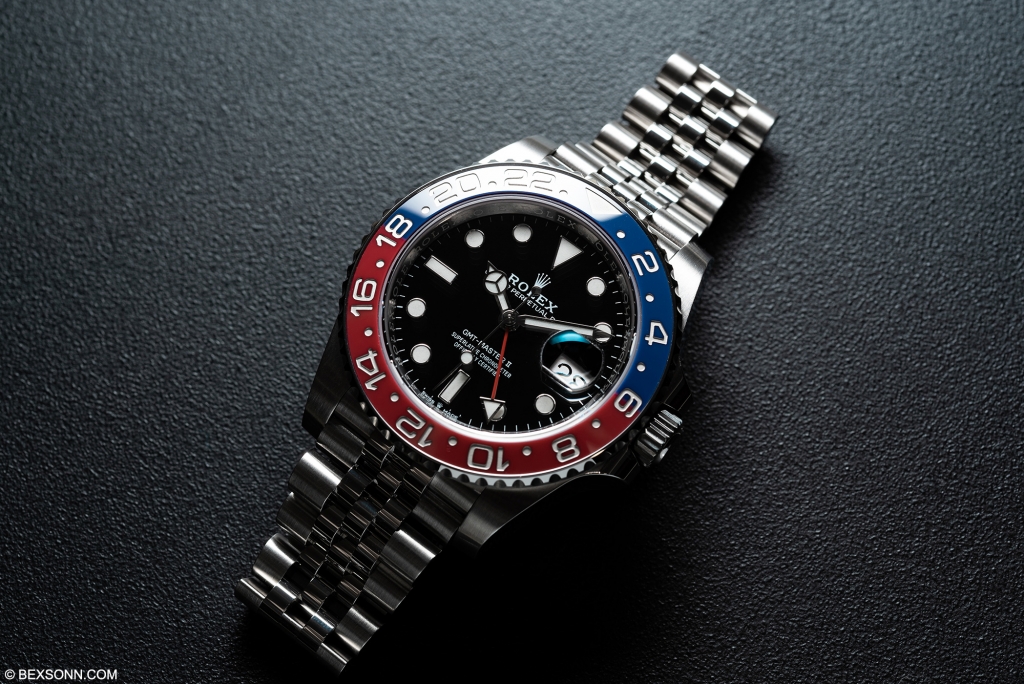 The new stainless-steel GMT-Master II 126710BLRO, just like its predecessors has a 40mm case but of course sports Rolex newer style thicker lugs, which makes the watch appear larger than it actually is. As per usual the case is waterproof to a depth of 100m but one of the main talking points of this release is the fact that Rolex have chosen to fit it with a Jubilee bracelet (a bracelet that was created especially for the Oyster Perpetual Datejust at its launch in 1945), in a nod to the days of old when buyers had the choice of choosing either an Oyster or Jubilee bracelet, however, this won’t be the case with this new piece. I knew before I even had my meeting that Rolex just wouldn’t make it possible to swap out the Jubilee with an Oyster bracelet, as this would simply confuse the new steel GMT, with the white-gold one, especially given the price disparity between SS and WG models. I was right, so for those of you who had any hopes of ordering your new steel GMT-Master II ‘Pepsi’ with an Oyster bracelet, yeah that’s not going to happen.
The new stainless-steel GMT-Master II 126710BLRO, just like its predecessors has a 40mm case but of course sports Rolex newer style thicker lugs, which makes the watch appear larger than it actually is. As per usual the case is waterproof to a depth of 100m but one of the main talking points of this release is the fact that Rolex have chosen to fit it with a Jubilee bracelet (a bracelet that was created especially for the Oyster Perpetual Datejust at its launch in 1945), in a nod to the days of old when buyers had the choice of choosing either an Oyster or Jubilee bracelet, however, this won’t be the case with this new piece. I knew before I even had my meeting that Rolex just wouldn’t make it possible to swap out the Jubilee with an Oyster bracelet, as this would simply confuse the new steel GMT, with the white-gold one, especially given the price disparity between SS and WG models. I was right, so for those of you who had any hopes of ordering your new steel GMT-Master II ‘Pepsi’ with an Oyster bracelet, yeah that’s not going to happen.
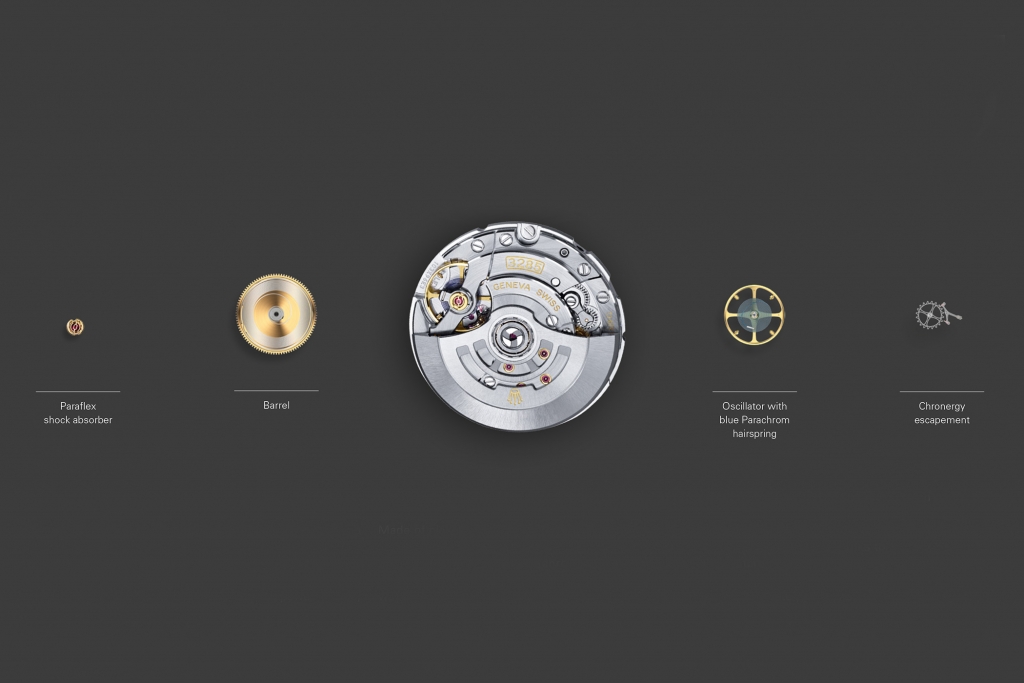 Inside the GMT-Master II “Pepsi”, Rolex have deployed the new in-house developed and manufactured 3285 calibre movement. This new-generation movement, manufactured by Rolex, has no less than 10 patent applications filed over the course of its development, this self-winding mechanical movement demonstrates Rolex strive for perfection. The calibre 3285 offers fundamental gains in terms of precision, power reserve, resistance to shocks and magnetic fields, as well as convenience and reliability. It incorporates the Chronergy escapement patented by Rolex, which combines high energy efficiency with great dependability. Made of nickel-phosphorus, this escapement is also insensitive to magnetic interference. Thanks to its new barrel architecture and its super-efficient escapement, the power reserve of calibre 3285 extends to approximately 70 hours.
Inside the GMT-Master II “Pepsi”, Rolex have deployed the new in-house developed and manufactured 3285 calibre movement. This new-generation movement, manufactured by Rolex, has no less than 10 patent applications filed over the course of its development, this self-winding mechanical movement demonstrates Rolex strive for perfection. The calibre 3285 offers fundamental gains in terms of precision, power reserve, resistance to shocks and magnetic fields, as well as convenience and reliability. It incorporates the Chronergy escapement patented by Rolex, which combines high energy efficiency with great dependability. Made of nickel-phosphorus, this escapement is also insensitive to magnetic interference. Thanks to its new barrel architecture and its super-efficient escapement, the power reserve of calibre 3285 extends to approximately 70 hours.
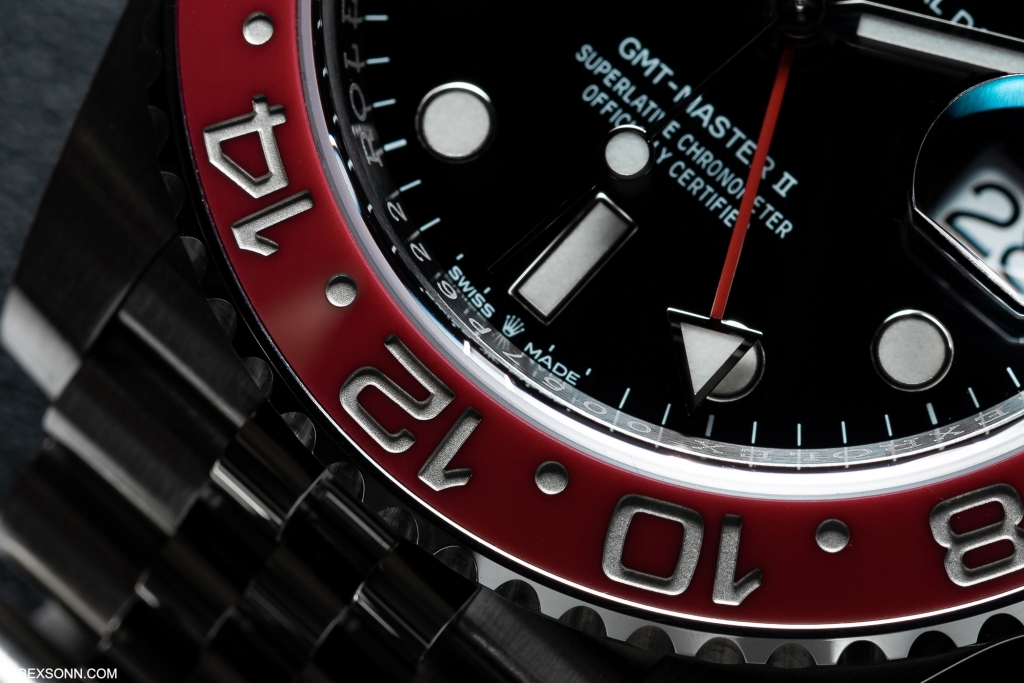 Naturally the movement allows the wearer to easily set the 24-hour hand to a second time zone, as it is independent from the normal hour hand. This of course is nothing new and has always been possible in the GMT-Master II’s but for those who are unaware, this was never possible in the GMT-Master and required the wearer to rotate the bezel to indicate a second time zone. Furthermore, Rolex have added a subtle detail that signifies it makes use of the new calibre. Instead of the wording “Swiss Made” at 6 o’clock, you’ll notice a little coronet, which is flanked by words “Swiss” and “Made”.
Naturally the movement allows the wearer to easily set the 24-hour hand to a second time zone, as it is independent from the normal hour hand. This of course is nothing new and has always been possible in the GMT-Master II’s but for those who are unaware, this was never possible in the GMT-Master and required the wearer to rotate the bezel to indicate a second time zone. Furthermore, Rolex have added a subtle detail that signifies it makes use of the new calibre. Instead of the wording “Swiss Made” at 6 o’clock, you’ll notice a little coronet, which is flanked by words “Swiss” and “Made”.
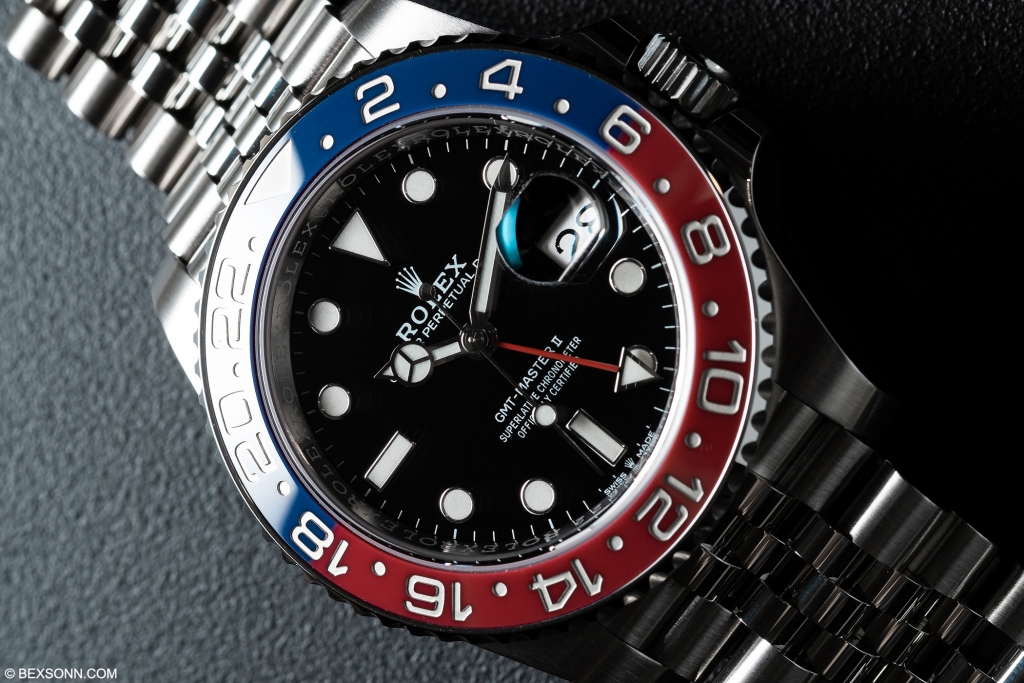 As you’ve probably heard me mention before, the red and blue Cerachrom insert for the bi-directional bezel goes through a rather interesting process. Rolex have patented, manufactured and developed a process for creating said bezel. Now, you may have thought that making a “Pepsi” bezel is just a case of fusing red and blue Cerachrom together, right? No. You see, Cerachrom as brilliant as it is for maintaining its colour over the years has inherent brittleness. Taking two different coloured pieces and fusing them together would make the Cerachrom bezel weaker and reliving the days of the Bakelite bezel is something, I’m sure, neither Rolex nor their owners want to do.
As you’ve probably heard me mention before, the red and blue Cerachrom insert for the bi-directional bezel goes through a rather interesting process. Rolex have patented, manufactured and developed a process for creating said bezel. Now, you may have thought that making a “Pepsi” bezel is just a case of fusing red and blue Cerachrom together, right? No. You see, Cerachrom as brilliant as it is for maintaining its colour over the years has inherent brittleness. Taking two different coloured pieces and fusing them together would make the Cerachrom bezel weaker and reliving the days of the Bakelite bezel is something, I’m sure, neither Rolex nor their owners want to do.
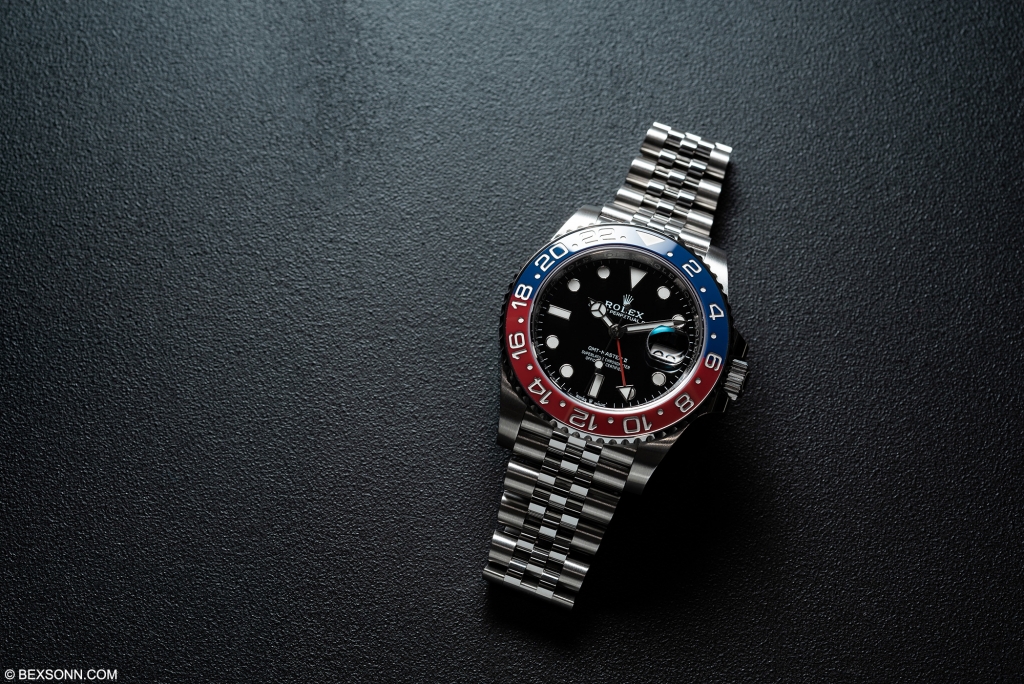 What Rolex had to do is to come up with a way of making the Cerachrom bezel out of one solid piece. Rolex does this by creating a red ceramic bezel inlay, which is an achievement in itself, according to Rolex it is very difficult to create a stable red mineral pigment. Half of the insert is then impregnated with a chemical compound to change the red to blue. Each grain of the bezel is changed using this technique but the colour transformation from red to blue only takes place when the bezel is baked to harden it. The 24-hour scale is then engraved in the ceramic and then coated with platinum via a PVD process. You could be forgiven for thinking that producing a red and blue ceramic bezel would’ve been a lot easier but as with everything, it has to be done the “Rolex Way”.
What Rolex had to do is to come up with a way of making the Cerachrom bezel out of one solid piece. Rolex does this by creating a red ceramic bezel inlay, which is an achievement in itself, according to Rolex it is very difficult to create a stable red mineral pigment. Half of the insert is then impregnated with a chemical compound to change the red to blue. Each grain of the bezel is changed using this technique but the colour transformation from red to blue only takes place when the bezel is baked to harden it. The 24-hour scale is then engraved in the ceramic and then coated with platinum via a PVD process. You could be forgiven for thinking that producing a red and blue ceramic bezel would’ve been a lot easier but as with everything, it has to be done the “Rolex Way”.
The Rolex GMT-Master II Ref. 126710BLRO has a list price of approximately £6,800 including VAT. More information is available on the official Rolex website.
